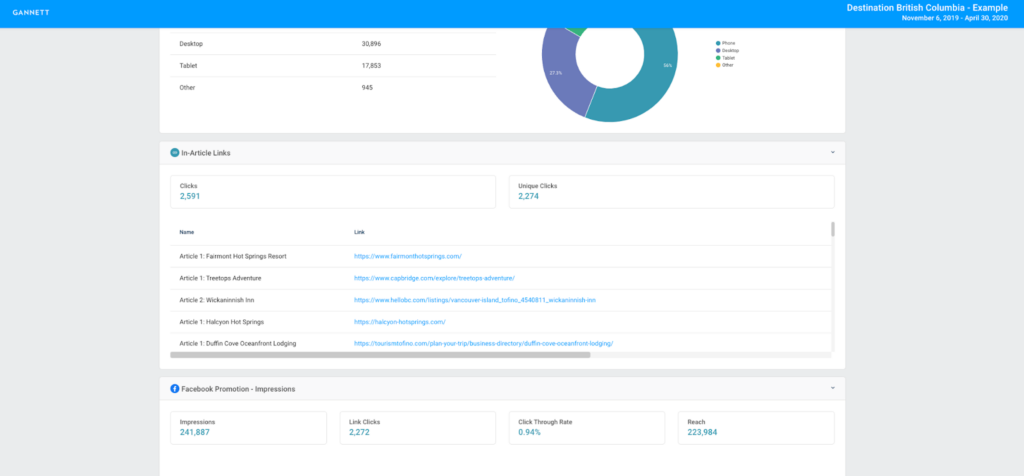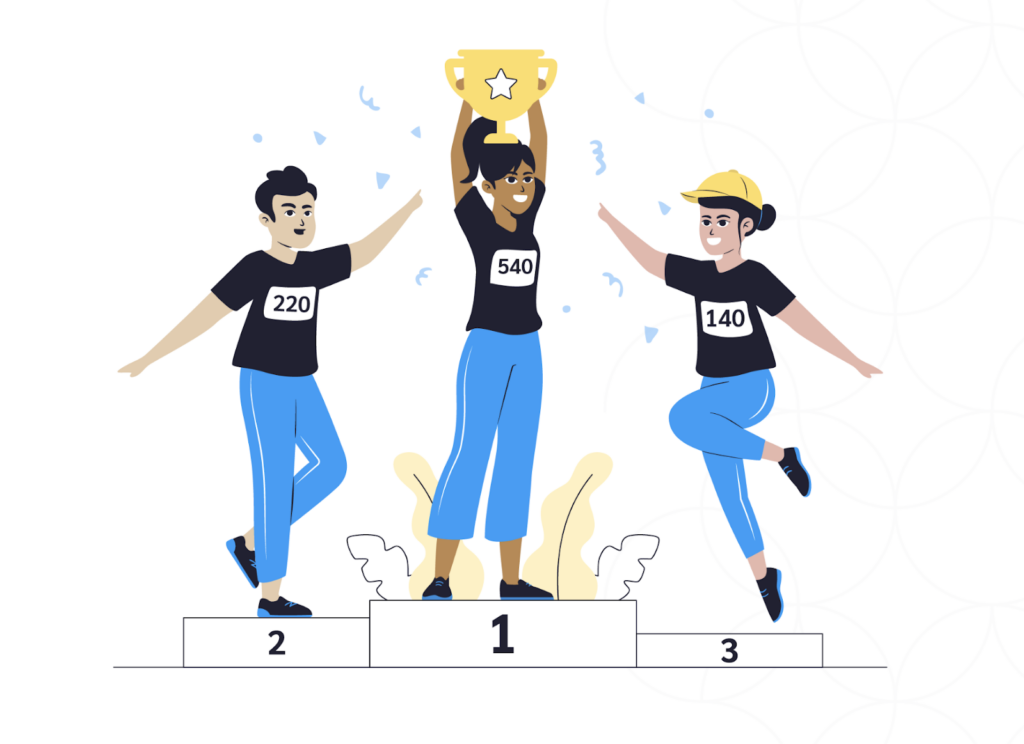Publishers who run branded content campaigns know they drive incremental revenue. However, they also know creating and running a large program drains resources, making it difficult to scale.
Mastering your campaign data can scale your program and save countless hours of manual work. Taming your data hinges on two essential steps: data consolidation and automation.
Why data matters for branded content
Data is the lifeblood of successful branded content campaigns.
When you sell a campaign to an advertiser, you promise a specific kind of return—whether it’s a certain number of impressions on campaign ads, number of reads on the content, or something else.
To show that your campaign meets an advertisers’ goals, you must provide visibility into campaign performance. Clear communication between publisher and advertiser is vital to maintaining customer satisfaction and encouraging repeat business.
You also need to track performance throughout the campaign life cycle, allowing you to evaluate if:
- You’ll meet advertiser goals
- You need to shift your strategy to meet advertiser goals
Holistic insight into your data makes successfully operating a branded content program at scale possible.
What are the benefits of data aggregation?
Data aggregation allows you to see your campaign performance from a birdseye view. Without aggregation, you must log into individual platforms to evaluate each campaign tactic.
For example, to see how a campaign is doing, you’d need to gather information manually from sources like:
- Google Analytics or Adobe Experience. Learn how people interact with the content and how they get there.
- MOAT. Gain visibility into cross-channel activities, especially on mobile devices.
- Ad platforms. See how well various ads perform across native and external sources with tools like Google Ads Manager, Nativo, AdMedia, and more.
- Social media platforms. Understand how social content and ads perform on platforms like Facebook, YouTube, TikTok, and more.
With data aggregation, you can get all this data in one place—saving you valuable time and resources.
5 ways data aggregation helps your branded content team
Aggregating your data and setting up automated systems to make sense of that information saves your team time in five exciting ways.
1. Create reports faster
Manually consolidating campaign data from every platform and vendor reduces your team’s productivity. The worst part? It’s unnecessary.
Technology solutions such as Pressboard by impact.com pull your campaign data into one place, liberating your team from the hours per week they spend creating spreadsheets for advertisers.
Aggregate your data and automate report assembly and delivery to free your team from low-value, manual tasks so they can focus on what matters:
- Attracting new advertisers
- Keeping current advertisers happy
2. Quickly understand campaign performance
With all the information you need in easy reach, you can monitor real-time campaign performance without logging in and out of various platforms.
A birds-eye view lets you see which tactics work. You can also quickly adjust your strategy to maximize effectiveness if campaign performance isn’t meeting expectations.

Pressboard by impact.com shows comprehensive campaign performance in a visual dashboard that you can share with advertisers directly.
3. Gain holistic insights into the best tactics
Imagine this: while reviewing your campaigns for the year, you discover that users that find your content through Facebook ads stay on the page two times longer than Google ads users on average.
One tweak to your campaign strategies, and your engagement potential doubles.

Uncovering these gems without aggregating your data is possible, but often, they get lost in the shuffle. Gaining insight into what connects with your audience allows you to quickly:
- Meet advertisers’ goals
- Create better-performing content
- Invest in high-return tactics
By breaking down the barriers that slow down such discoveries, you can spend less time trying to understand what works and what doesn’t.
4. Strengthen strategic decision-making
Work smarter rather than harder to make your campaigns shine. Data takes the guesswork out of planning your campaign strategy. Rather than debating best practices, you have proof of what works and what doesn’t.
Imagine your team debating how many images to put into a branded content article. The debate would end if they could easily access data showing increased scroll depth on articles with at least four engaging images. You would simply have a new standard.
5. Pull together proposals at scale
The more insight you have into campaign performance, the more effective your RFPs will be.
Well-organized data allows you to tailor your RFPs to the prospect. Easily track down helpful information to incorporate into the proposal, including:
- Advertiser vertical
- Advertiser budget
- Campaign goals
- Campaign type
Let’s say you’re pitching a financial services advertiser on your services. Since your data is all in one place, you can quickly locate the average campaign metrics for advertisers in the same vertical.
Weaving that information into the proposal highlights your effectiveness in driving similar business conversions.
How to aggregate your branded content data in 3 steps
Unite your branded content data in 3 steps:
- Collect: Gather information from every campaign channel—on-page content data and metrics from distribution channels—into a central location.
- Process: Now that your data is in one place, analyze it to tease out key insights. How long are readers sticking with the content? What tactics drive the most traffic? Are you on track to meeting the advertiser’s goals?
- Present: Make your data and insights shareable with advertisers by organizing it visually, such as a slide deck or—even better—an interactive dashboard.
Data aggregation may be time-consuming, but it’s essential for understanding and sharing campaign performance.
Using a data aggregation platform
Data aggregation platforms allow you to bring critical campaign information together without the heavy lift.
These tools connect to various data sources—such as Google Analytics or Facebook Ads Manager—and automatically feed information into one centralized dashboard. You don’t need to go through the error-prone process of accumulating all of your data into a spreadsheet and then translating it into a slide deck for client presentations.
Often, dashboards are highly visual, making them easily shareable with advertisers and internal stakeholders.
When you use a data aggregation platform, you automate the collection and presentation steps, while streamlining data processing. This allows you to focus your energy on analyzing and optimizing campaigns.
Better data, better decisions, better campaigns
What could be better than increasing revenue while saving time? Pressboard—part of the impact.com for Publishers suite—puts all of these benefits within reach.
The suite provides multiple solutions for boosting your branded content program, including:
- Centralizing your data
- Streamlining operations
- Automate campaign reporting
Want to find out how your branded content program compares to some of the world’s top publishers? See our 2022 Presboard Benchmark Report.






